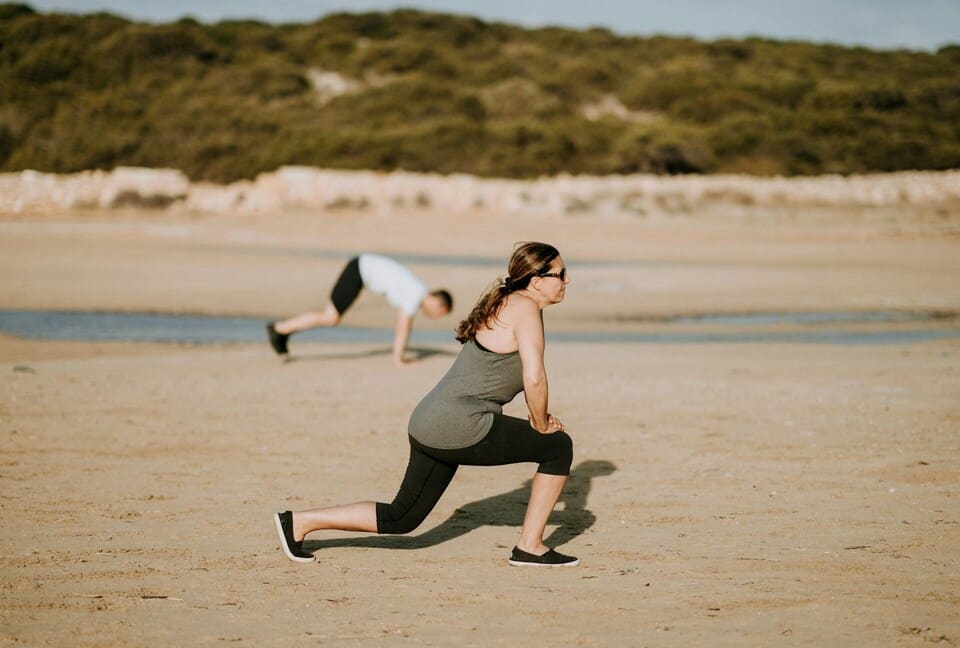Postpartum Recovery Guide to Healing & Strength After Birth
When we think about becoming a mother, we often focus on pregnancy and childbirth. But what happens after the baby arrives? The postpartum period; those weeks and months after birth; can feel like navigating uncharted territory. Your body has done something incredible, and now it needs time, care, and understanding to heal and regain strength.

The Reality Check: “Bouncing Back” is a Myth
The truth is, your body doesn’t “bounce back” overnight. Recovery takes time, patience, and the right approach. Whether you had a vaginal birth or C-section, your body has undergone remarkable changes that require intentional healing. The good news? With the right information and support, you can navigate this journey with confidence and emerge stronger than ever.
Understanding Your Body’s Journey: The Fourth Trimester
The first three months after delivery, often called the “fourth trimester,” involve profound physical changes as your body begins to return to its pre-pregnancy state. However, complete recovery typically takes 12-18 months, and some changes may be permanent.
What’s happening inside your body (0-6 weeks):
- Your uterus shrinks from ~1 kg to <100 g over 4 - 6 weeks
- Hormones plummet, creating an emotional rollercoaster
- Muscles and connective tissue are stretched and traumatized
- Sleep deprivation affects tissue repair and pain management
“Your body isn’t broken; it’s healing. Give it the time and care it deserves.” - Women’s Health Physiotherapist
Pelvic Floor Recovery: The Foundation of Your Health
The pelvic floor is a hammock of muscles that supports your bladder, uterus, and bowel. During pregnancy and childbirth, these structures experience significant stress and stretching. Up to 50% of women have some degree of pelvic floor dysfunction after vaginal delivery.
Common Pelvic Floor Issues
Many women experience pelvic floor dysfunction postpartum, which can manifest as:
- Urinary incontinence (leaking when coughing, sneezing, or laughing)
- Pelvic organ prolapse (feeling of heaviness or pressure)
- Pelvic pain or discomfort
- Reduced sexual sensation or pain during intercourse
Remember: These symptoms are common but not normal. They can be treated and improved with the right approach.
Your Pelvic Floor Recovery Plan
Early Recovery (Day 0 - 14): Gentle Awakening
Start with awareness and gentle activation:
- Breathing exercises: Lie on your back, knees bent. Inhale gently, allowing ribs and belly to expand
- Gentle contractions: On the exhale, imagine “picking up a blueberry with your vagina” and “drawing the anus away from the chair”
- Frequency: 10 breaths × 5 times per day
Progressive Strengthening (Week 3 - 12): Building Foundation
Add graded strength work:
- Quick flicks: 1-second squeeze / 1-second release × 15
- Endurance holds: 8 - 10 second holds, relax 10 seconds, × 10
- Functional integration: Squeeze before coughing, lifting baby, or climbing stairs
When to Seek Professional Help
Consult a pelvic health physiotherapist if you experience:
- Any grade of prolapse sensation
- Ongoing leakage at 6 weeks
- C-section scar pain or numbness
- Pain with sexual activity
Diastasis Recti: Understanding Abdominal Separation
Diastasis recti, the separation of the rectus abdominis muscles along the linea alba, affects up to 60% of postpartum women. This separation occurs naturally during pregnancy to accommodate your growing baby but requires attention for proper healing.
Self-Assessment: Checking Your Separation
How to check (Week 2 onward):
- Lie on back, knees bent
- Lift head slightly
- Place fingers horizontally above your belly button
- Feel for a gap or doming between the muscle bands
60% of postpartum women have diastasis at 6 weeks, but only 33% still have it at 12 months without targeted rehab.
Healing Your Diastasis: A Progressive Approach
Phase 1: Fascial Approximation (Week 2 - 6)
Focus on breathing and gentle core activation:
- Supine 360° breathing: 5 × 10 breaths
- Pelvic tilts with TA draw-in: 3 × 12 repetitions
Phase 2: Low-Load Isometrics (Week 6 - 10)
- Heel slides with TA activation: 3 × 10 each leg
- Dead bug level 1: Arms overhead, alternate heel tap, maintain abdominal brace
Phase 3: Mid-Load Dynamic (Week 10 - 16)
- Quadruped bird-dog: 3 × 8/side
- Modified side plank on knees: 3 × 20 seconds
Exercises to Avoid Until Gap <2 cm & No Doming
- Traditional sit-ups or crunches
- Double-leg lifts
- High plank without adequate tension
- Heavy overhead presses in poor alignment
Safe Return to Exercise: Your Traffic-Light Framework
Returning to exercise postpartum requires a progressive approach that respects your body’s healing process. The traditional six-week clearance is just the beginning, not an automatic green light for intense exercise.
Your Progressive Return Plan
Early Recovery (0-6 weeks): Red Zone
Focus on gentle activities that promote healing:
- Short walks as tolerated
- Deep breathing exercises
- Gentle stretching
- Basic posture correction
- Light household activities
Week 8 - 12: Amber Zone
After medical clearance, gradually increase activity:
- Brisk walking with pram
- Stationary bike low resistance
- Body-weight circuits (squat, lunge, incline push-up)
- Monitor for increased bleeding, pain, or doming
Week 12 - 16: Green Zone
- Gradual return to running: Couch-to-5K principles
- Strength training 2 - 3 × week, 8 - 12 RM loads
- Introduce single-leg hops, light kettlebell swings
Exercise Considerations
Throughout your return to exercise, monitor for warning signs:
- Heaviness or pressure in the pelvic region
- Urinary leakage during activity
- Abdominal doming or coning
- Significant joint pain
- Unusual fatigue
If you’re breastfeeding, ensure adequate hydration and nutrition to support milk production.
C-Section-Specific Recovery
Scar Care Timeline
- Day 2 - 10: Gentle mobility; avoid prolonged trunk flexion
- Week 2 - 6: Desensitize scar with clean fingers + silicone strips
- Week 6 onward: Scar mobilization (cross-friction massage) 2 min/day to prevent adhesions
Women who perform daily scar massage from 2 weeks report 30% less pain with daily activities at 3 months postpartum.
C-Section Recovery Tips
- Pain management: Take prescribed pain medication as directed
- Movement: Gentle walking helps prevent blood clots and promotes healing
- Scar care: Keep the incision clean and dry, follow your doctor’s instructions
- Support: Use pillows to support your incision when coughing or laughing
Nutrition and Lifestyle: Supporting Your Recovery
Your body needs adequate nutrition to heal and, if breastfeeding, to support milk production. Focus on nutrient-dense whole foods, adequate protein for tissue repair, and plenty of water.
Essential Nutrients for Recovery
- Protein: 1.2 - 1.6 g/kg/day for tissue repair
- Collagen boosters: Vitamin C (citrus, berries) + glycine-rich broths aid linea alba recovery
- Hydration: Aim for 8-10 glasses of water daily, plus extra if breastfeeding
- Iron: Important for energy and preventing anemia
Lifestyle Factors
- Sleep micro-dosing: 20-min naps improve growth-hormone pulses when overnight sleep is fragmented
- Stress management: Elevated cortisol slows fascial turnover; 5 min of diaphragmatic breathing drops cortisol by 23%
- Rest: Accept help when offered, sleep when the baby sleeps when possible
Mental Health and Emotional Recovery
Physical recovery intertwines closely with emotional well-being. The postpartum period can involve significant mood changes, from baby blues to more serious conditions like postpartum depression or anxiety.
Understanding Postpartum Emotions
- Baby blues: Up to 80% of new mothers experience weepiness, anxiety, or irritability in the first two weeks
- Postpartum depression: Affects 1 in 7 mothers and requires professional support
- Postpartum anxiety: Can manifest as excessive worry about the baby’s health or safety
Self-Care Strategies
- Rest when possible - Take naps while the baby sleeps
- Stay hydrated and nourished - Eat nutritious meals and drink plenty of water
- Ask for help without guilt - Accept assistance from family and friends
- Set healthy boundaries - Say “no” to visitors when you need rest
- Incorporate small moments of joy - Listen to music, take short walks, practice deep breathing
When to Seek Professional Help
Consult healthcare professionals if you experience:
- Persistent sadness or anxiety
- Difficulty bonding with your baby
- Thoughts of harming yourself or your baby
- Difficulty sleeping even when the baby is sleeping
- Loss of interest in activities you usually enjoy
Building Your Support Team
Consider assembling a team of professionals to support your recovery:
- Pelvic floor physiotherapist: For pelvic health and diastasis recti
- Postnatal exercise specialist: For safe return to fitness
- Registered dietitian: For nutrition guidance
- Mental health counselor: For emotional support
- Massage therapist: For muscle tension and scar care
Your Postpartum Recovery Checklist
☐ Cleared by OB/GYN or midwife at 6-week visit
☐ No bleeding increase with daily activities
☐ Pelvic-floor strength ≥3/5 Oxford scale
☐ Diastasis <2 cm or no doming with functional tasks
☐ Able to walk 30 min pain-free
☐ Mental readiness; exercise feels empowering, not punishing

Moving Forward with Confidence
Remember that every woman’s recovery journey is unique. What works for others may not work for you, and that’s perfectly normal. Listen to your body, celebrate small victories, and don’t hesitate to seek help when needed.
Your body has accomplished something remarkable - treat it with the care and respect it deserves during this important recovery phase. The investment you make in proper postpartum recovery will benefit not only your immediate well-being but your long-term health.
“Recovery isn’t a race; it’s a journey toward renewed strength and vitality.”
References:
-
Gluppe SLB, Engh ME, Bø K. What is the evidence for abdominal and pelvic floor muscle training to treat diastasis recti abdominis postpartum? Braz J Phys Ther. 2021;25(6):664-675.
-
Benjamin DR, Frawley HC, Shields N, et al. Relationship between diastasis of the rectus abdominis muscle (DRAM) and musculoskeletal dysfunctions, pain and quality of life: a systematic review. Physiotherapy. 2019;105(1):24-34.
-
Dumoulin C, Cacciari LP, Hay-Smith EJC. Pelvic floor muscle training versus no treatment, or in active control treatments, for urinary incontinence in women. Cochrane Database Syst Rev. 2018;(10):CD005654.
-
American College of Obstetricians and Gynecologists. Physical Activity and Exercise During Pregnancy and the Postpartum Period: ACOG Committee Opinion No. 804. Obstet Gynecol. 2020;135(4):e178-e188.
-
Bø, K., & Nygaard, I. E. (2020). Is physical activity good or bad for the female pelvic floor? A narrative review. Sports Medicine, 50(3), 471-484.
Disclaimer: This blog is for educational purposes and does not replace personalized medical advice. Always consult a qualified health professional before beginning any exercise program.





